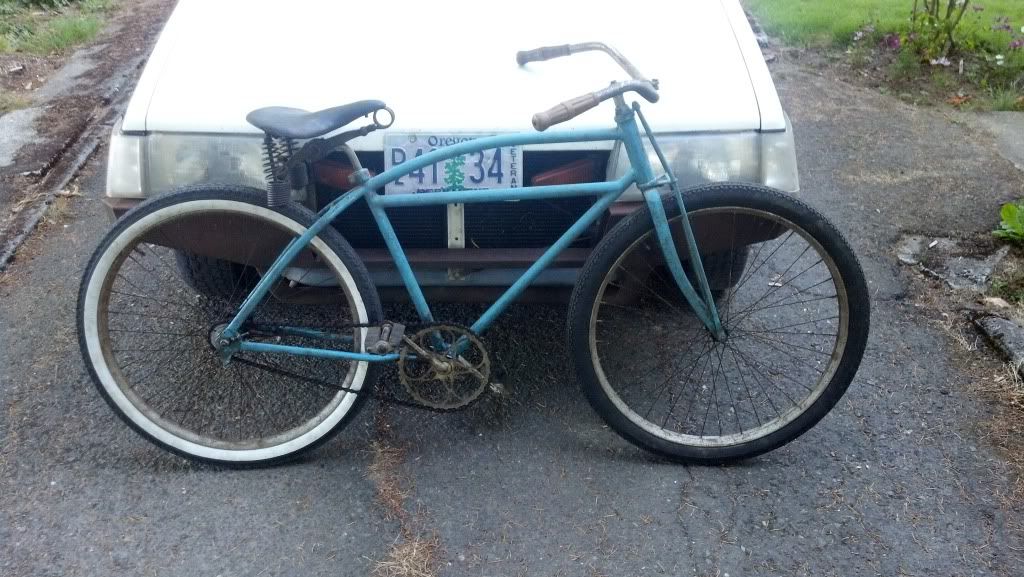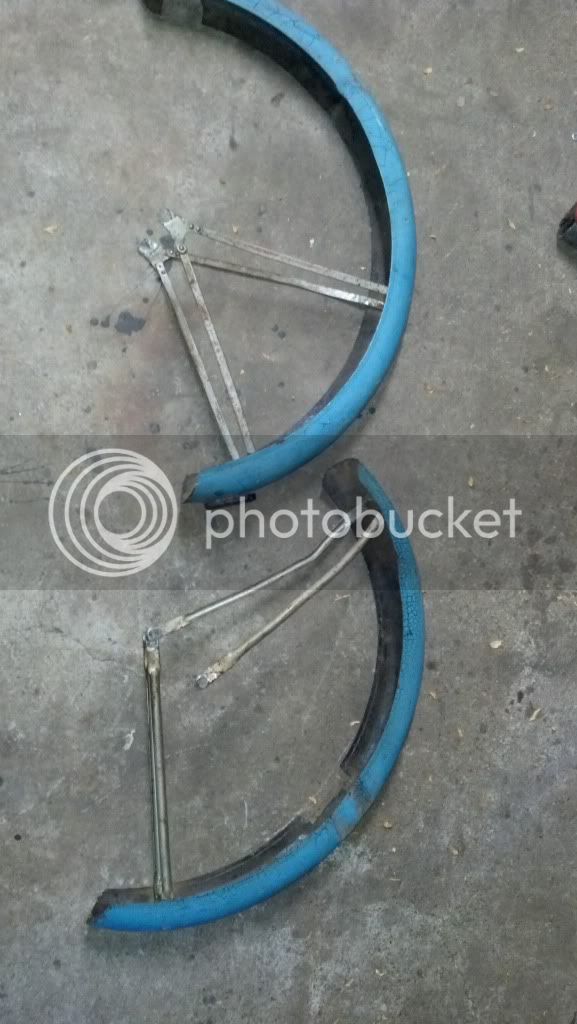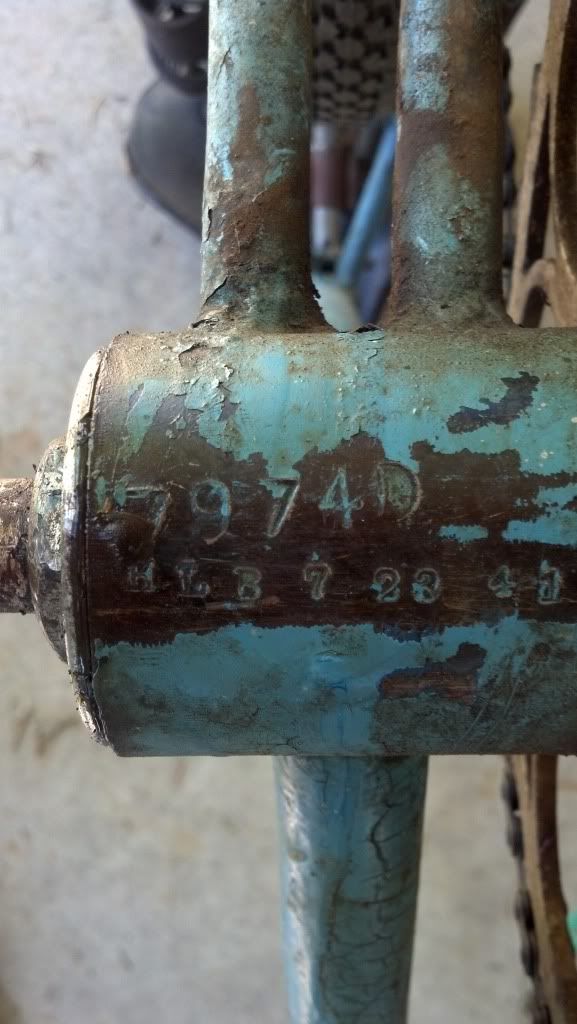You are using an out of date browser. It may not display this or other websites correctly.
You should upgrade or use an alternative browser.
You should upgrade or use an alternative browser.
colson? any ideas?
- Thread starter CWC
- Start date

Help Support Rat Rod Bikes Bicycle Forum:
This site may earn a commission from merchant affiliate
links, including eBay, Amazon, and others.
Looks like you've got a 36-37 Colson frameset there. It could have started life as a base model all the way up to the very desireable Imperial; but all the important parts are gone if it is the latter. Sweet bike indeed regardless!
not sure, but I like it. Nice seat, grips, bars, truss fork and stem. I'd lose the whitewall and ride it like that. Nice score!
Yeah I hate that white wall but I didnt have another black tire to put on it and I dont want to use the OG US chain tires on it, they are in really good shape but I think Im gonna sell them and use new rubber just for my safetyNightrider said:not sure, but I like it. Nice seat, grips, bars, truss fork and stem. I'd lose the whitewall and ride it like that. Nice score!

$412.30
$489.99
Schwinn Loop Adult Folding Bike for Men and Women, 20-inch Wheels, 7-Speed Drivetrain, Rear Cargo Rack, Carrying Bag, Silver
Amazon.com

$412.10
$449.99
Schwinn Regioneer Womens Hybrid Comfort Bike, 26-Inch Wheels, 7 Speed, 16.5-Inch Steel Frame, Alloy Linear Brakes, White
Amazon.com

$19.99
Electra Glide Wall Decal 2ft Long Sport Harley Davidson Bike Motorcylce Sticker Man Cave Garage Boys Room Decor
FatCat Wall Graphics

$19.99
Top Brass Bicycle/Motorcycle Chain Picture Frame 5" X 7" Photo - Faux Bike Chain
Old River Outdoors (USA Merchant)
The bike is a Colson and the evidence suggests that this bike is probably a late 1937 offering. The serial number may help pin the actual date down
The frame itself is a Colson short-wheelbase straight-bar.
As such it is an overlap of Colson’s long wheel-base 1936/1937 straight-bar frame design which was dropped at the end of 1937, and their new-for-1938, short-wheelbase geometry frame.
A composite of 1937 and 1938 design features, this frame does not appear in any Colson Catalog but there are several examples extant today to prove they were produced. Still, it is an uncommon Colson frame variant.
Another clue to the original build is the pattern of the truss rods which are straight/angled rather than curved/waterfall. If the bike had been originally built as a high-line model, such as an Imperial, it would have equipped the waterfall pattern truss rods.
The frame itself is a Colson short-wheelbase straight-bar.
As such it is an overlap of Colson’s long wheel-base 1936/1937 straight-bar frame design which was dropped at the end of 1937, and their new-for-1938, short-wheelbase geometry frame.
A composite of 1937 and 1938 design features, this frame does not appear in any Colson Catalog but there are several examples extant today to prove they were produced. Still, it is an uncommon Colson frame variant.
Another clue to the original build is the pattern of the truss rods which are straight/angled rather than curved/waterfall. If the bike had been originally built as a high-line model, such as an Imperial, it would have equipped the waterfall pattern truss rods.
Lookie here...
http://www.ohiomemory.org/cdm/compoundo ... 076/rec/18
http://www.ohiomemory.org/cdm/compoundo ... 076/rec/18
The additional photos of the serial numbers and the fenders make me question my previous assumption that the shorter wheelbase frames were not developed and offered until late 1937.
The serial number on this short wheelbase frame is in the pattern of other 1936 Colsons I have in my data base, whereas all the other short frames I have recorded have 1937 and 1938 pattern serial numbers. The fenders appear to be 1936 pattern deep crescent fenders (the rear has original braces, the front has been modified.) In 1937 Colson generally switched to gothic, peaked fenders that were slightly shallower.
Looking at the 1936 catalog with this in mind, it does look like there may be long and short wheelbase frames depicted (of course they are illustrations and they also show a reverse printed image of the girl’s model with drive train on the wrong side!)
The catalog does note that 26” balloon tired models were available in both 20-1/2” and 18-1/2” frame sizes so an assumption might be that if two wheelbase lengths were produced in 1936, the geometry would have been linked to the seat mast height. Against that assumption is the fact that the third page and the fifth page of the 1936 catalog show illustrations of frames that appear to have a shorter wheelbases than the Double Bar Motor Bike on the fourth page; but all of those illustrated bicycles have model numbers correspond to the taller frame version.
One other feature to note is that the catalog which likely describes the specification for early 1936 models describes all of the bicycles being equipped with a tubular fork. From the Colsons I have observed, I believe it was during 1936 that the switch was made to a fully forged fork like the one on the bike in this thread.
So, considering the serial number and the fenders I have changed my mind on dating the bike and now believe it is a 1936 Colson. I’m glad I checked in on this thread because this has definitely tweaked my theories and given some new areas to investigate.
The serial number on this short wheelbase frame is in the pattern of other 1936 Colsons I have in my data base, whereas all the other short frames I have recorded have 1937 and 1938 pattern serial numbers. The fenders appear to be 1936 pattern deep crescent fenders (the rear has original braces, the front has been modified.) In 1937 Colson generally switched to gothic, peaked fenders that were slightly shallower.
Looking at the 1936 catalog with this in mind, it does look like there may be long and short wheelbase frames depicted (of course they are illustrations and they also show a reverse printed image of the girl’s model with drive train on the wrong side!)
The catalog does note that 26” balloon tired models were available in both 20-1/2” and 18-1/2” frame sizes so an assumption might be that if two wheelbase lengths were produced in 1936, the geometry would have been linked to the seat mast height. Against that assumption is the fact that the third page and the fifth page of the 1936 catalog show illustrations of frames that appear to have a shorter wheelbases than the Double Bar Motor Bike on the fourth page; but all of those illustrated bicycles have model numbers correspond to the taller frame version.
One other feature to note is that the catalog which likely describes the specification for early 1936 models describes all of the bicycles being equipped with a tubular fork. From the Colsons I have observed, I believe it was during 1936 that the switch was made to a fully forged fork like the one on the bike in this thread.
So, considering the serial number and the fenders I have changed my mind on dating the bike and now believe it is a 1936 Colson. I’m glad I checked in on this thread because this has definitely tweaked my theories and given some new areas to investigate.
What kind of cabbage are we talking about? Pencil me in on the "dibs" list.
Johnny
Johnny
I would have to put a tag on this of around 475, I could part it out and make more but I don't want to part out a bike like this and I was told by many people it was really worth more than thatNightrider said:What kind of cabbage are we talking about? Pencil me in on the "dibs" list.
Johnny





























































